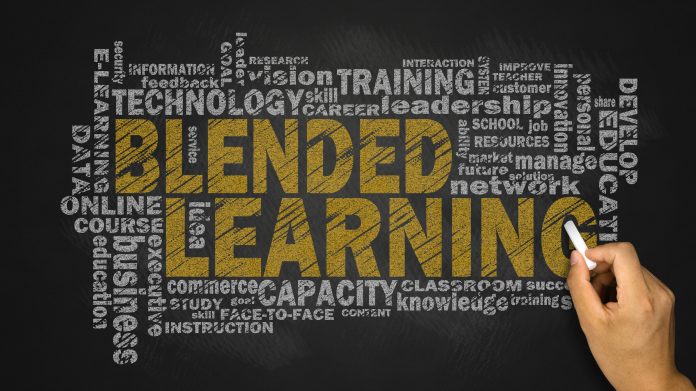Stewart Watts, Vice-President EMEA, D2L, explores how UK universities can best prepare themselves for blended learning, a mix of online curriculums and offline experiences
The COVID-19 pandemic has completely reshaped the education system. With social distancing likely to be in place for the foreseeable future, institutions will have to reassess face-to-face teaching and look towards blended learning model solutions. A number of universities are already planning to move at least their first semester online this September, whilst others such as Cambridge University have said it will conduct all lectures remotely throughout the entire academic year. In any case, institutions will require far more complex and sophisticated education technology solutions to make this work.
What is blended learning?
The concept of ‘blended learning’ itself can be difficult to define, with industry definitions ranging from 30-70% of activities being completed online versus face-to-face. Either way, blended learning at its core is a delivery and design method, with programmes carefully devised with various activities completed online. These can range from online tests, interactive learning materials and even video content. However, some elements, naturally, will have to be completed face-to-face and there is no replacing those vital discussions in the classroom.
How can blended learning work in practice?
For blended learning to be ‘seamless’, it is of utmost importance that educators consider the process. It must include ‘backwards and forwards’ references. Where you have live events and teaching happening, you can see that reflected in the online element, and when you are synchronously interacting, you talk and reference the online activities to create a connected learning experience.
Seamless blended learning involves the careful partnering of technology within any course. Successful courses will allow students to use engaging online resources in a variety of formats, whether audio, film, or interactive quizzes, and all their learning materials should be pooled together online and regularly updated, enabling them to learn from anywhere, at their pace, and on any device. Most importantly, students should be able to access learning materials ahead of lessons, meaning seminars can instead be an opportunity for students to put their knowledge into practice.
This approach allows for a more interactive and engaging method of learning, where synchronous and asynchronous collaboration tools not only ease lecturers’ workloads, but in fact, account for each individual student’s learning needs. They are designed to allow academic staff to easily transform their physical classroom experience into a high-quality hybrid learning experience.
The blended learning skills gap
This would be the ideal course, however, unfortunately, many lecturers and teachers have never been officially trained in delivering teaching online or designing online learning experiences, as it is usually not part of the teacher training curriculum. It has been one of the key challenges of the pivot to remote and online learning caused by COVID-19 and will need to be resolved if a blended learning approach is to be successful.
This lack of instructional design knowledge means that beginning to create a structured online space can be challenging. Understanding the difference between web-enhanced learning (where supporting documents are kept online for ease of access) and blended learning (where structured learning activities are moved from the classroom to online) is vital for educators when they are planning their courses throughout the year.
Both education technology and online learning should complement all current learning and teaching objectives. Ensuring staff can use and apply these technologies effectively throughout their programmes helps ensure they deliver the best learning experience possible and should be included in any initial teacher or lecturer training. Moving beyond online pedagogy, an understanding of online tools and workflows is key. Without lecturers knowing what tools they have available and how they can be used, it is difficult to translate live activities into fully immersive online experiences.
The most important thing to include in any staff training on technology-enhanced learning (TEL) is the concept of online learning itself. Staff must be educated on the power and impact of online activities, the benefits of blended learning and how they can measure the impact of this change. Without this crucial element, there will be a stifling of innovation in education, making it much more difficult to create an engaging and varied learning experience.
As the university year begins again in September, we will likely see a variety of different approaches from different universities, likely with various degrees of success. If blended learning approaches are to be successful across the board, it will take the combined efforts of educational institutions, government bodies and those of us within the education technology space to ensure that the requisite training, technology and support is provided to teachers and lecturers.











